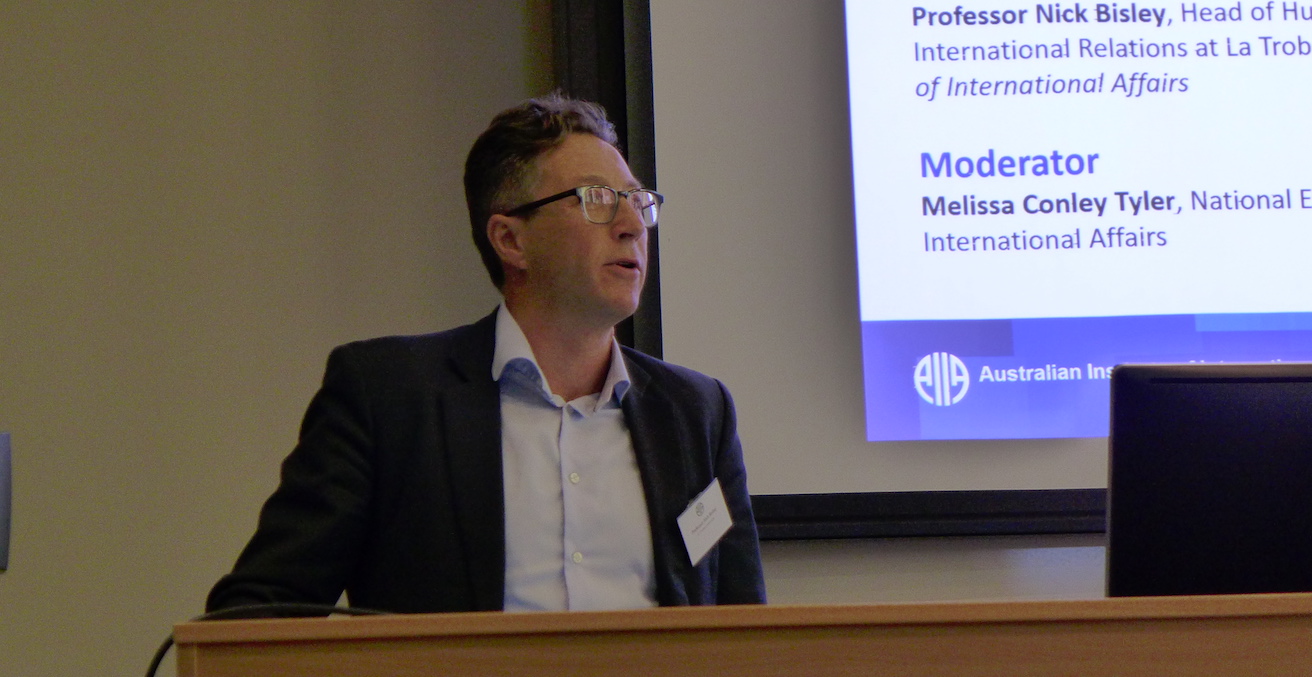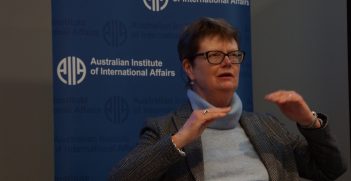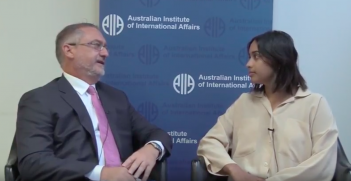Australia's Rules-Based International Order

The ‘rules-based international order’ has become a rhetorical centrepiece of Australian international policy. One of the challenges in the current moment is that the rules and principles that were built on the foundation of American primacy are being questioned as power shifts.
Over the past decade or so the ‘rules-based international order’ has become a rhetorical centrepiece of Australian international policy. As Allan Gyngell points out, the term was essentially unused by any government minister during the Howard Government, but began to gather a lexical head of steam under the Rudd and Gillard governments. It reached its apogee in the Defence White Paper of 2016 in which it was not only mentioned 48 times in text but was identified as one of Australia’s core strategic interests.
Why Australia has rediscovered its enthusiasm
Many people, both in Australia and abroad, fail to realise how young Australian foreign policy is. The country has only begun to play a properly independent role on the global stage since 1942, with the passing of the Statute of Westminster. The world into which the Commonwealth stepped was one freshly remade by the victorious Allied powers, which had consciously created a rule-governed order institutionalised in the United Nations in an attempt to prevent yet another global conflagration. In many ways the ‘rules-based international order’ — understood as a shorthand for the UN-centred system that imposes limits on what states can do and which provides a wide array of rules governing international economic relations — is the only international environment Australia has known. That order was especially empowering for a country like Australia: it provided the means through which lesser states could not only thrive as the powerful restrained themselves, but were also given the chance to shape their environment.
Just because Australia has been an adept player of the game, one should not neglect the reality that much of the reason it did so well out of the post-war order was because it was so well suited to the country’s circumstances. The balance of power on which the order rested was one dominated by our newly-forged ally. Equally, the dominant values and culture of the rules-based order were North Atlantic. As a largely white European colonial settler society, whose culture and values were firmly rooted in the North Atlantic world, Australia could easily find comfort from and a welcoming place in this international context. Not for Canberra were the challenges of a post-colonial existence, struggling to reconcile local traditions, culture, values and race with an unwelcoming international environment.
One of the reasons Australia did not talk about the rules-based international order in the past is that it was not only hard-wired into the policy settings, it was simply there. To discuss it would be like talking about the oxygen content of the air. Australia has begun to realise that things are changing and that the realities of the past cannot be taken for granted or assumed. As American power and purpose wanes, and as newly confident emerging powers seek to shape the international environment, Australia has begun to realise that the constitutional setting of international society rested on a particular constellation of political and economic forces. What had seemed fixed and unlovable may not be there forever and steps need to be taken to defend it. Like an athlete training at high altitude, we’ve begun to notice that there’s not as much oxygen around as before.
Power, order and values
While the international order that has been so beneficial for Australia has been rules-based, it is not a purely rule-driven system. It sits on top of, and indeed in many respects is dependent upon, a stable and accepted relationship between power and rules. But in both the political use of the notion — particularly as an implicit critique of China — as well as the broader public debate about these circumstances, there has been a tendency to romanticise the idea of a rules-based order. The rules-based order is presented as a value-neutral and technical-legal fact in which we, the Western powers, do the right things and the outliers break the rules.
The reality of course is much more complex — rules are regularly broken by all parties — and even the indiscretions of China and Russia in recent years are more exceptions than they are standard practice. As a political move, invoking rule-following as a gold standard for international behaviour is a problem not only because of the easy criticism of hypocrisy but also because those who are acting in ways of which we don’t approve have relatively easy ways to fend off critique because most of the time they are actually following the rules.
The rules-based formulation is also explicitly or implicitly contrasted to a power-based order in which challenges threaten a Hobbesian world where the strong do what they will prevails. This is a false dichotomy. All orders reflect some combination of coercion and consent and processes of rule-making and rule following in which the ideas and norms that underpin rules interact with the distribution of power and force. The prevailing order is one that rests, especially in East Asia, on the primacy of the United States.
One of the challenges in the current moment is that the rules and principles that were built on the foundation of American primacy are being questioned as power shifts. Any move away from that order would not involve the replacement of US led order with anarchy and the absence of rules. Rather it would entail different rules serving different interests and a different configuration of power.
International orders of all kinds, whether rules-based or not, reflect values and interests. The current order is being weakened because some emerging powers perceive that the values and interests it serves does not align with their own. But one important point was the significance of the social purpose served by the rules-based order as it was originally conceived. This was referred to by Australian policymakers in the early decades of the order as ‘the positive approach’ but is also known by the much less appealing term ‘embedded liberalism’. The international order created in the 1940s explicitly set out to make liberal capitalist economic relations the global norm. It had a long-term aim of integrating markets via the reduction of tariffs and other barriers to trade, and commerce had a clear domestic function for its member states.
The domestic social purpose of successful international orders
Liberalisation of the global economy served domestic social ends, that is, the creation of welfare states, full-employment goals and other socially progressive purposes. This gave the order a clear domestic social and political anchor in its participating countries. International orders work best when they have such an anchor: this was a key part of the Concert of Europe’s system which sought to establish an international environment that protected the ancient regime and kept the revolutionary ideas of liberalism and revolution at bay. Today that domestic purpose is uncertain as we detached it from economic social functions in the 1980s and 1990s and we have not yet replaced it with anything.
This absence is a notable feature of the ‘rules-based order’ today and goes some of the way to explaining the gyrations of advanced democracies’ political systems. But it can also be a positive focal point for the necessary order-building that needs to occur.
Nick Bisley is Head of Humanities and Social Sciences and Professor of International Relations at La Trobe University. He is a member of China Matters’ Advisory Board and in 2013-2018 was the Editor-in-Chief of the Australian Journal of International Affairs.
This article is an edited extract of his remarks at a conference on Australia and the Rules-Based International Order held on 18-19 July organised by the Australian Institute of International Affairs, Department of Foreign Affairs and Trade and ANU Coral Bell School with the support of the Attorney-General’s Department.
This article is published under a Creative Commons Licence and may be republished with attribution.





